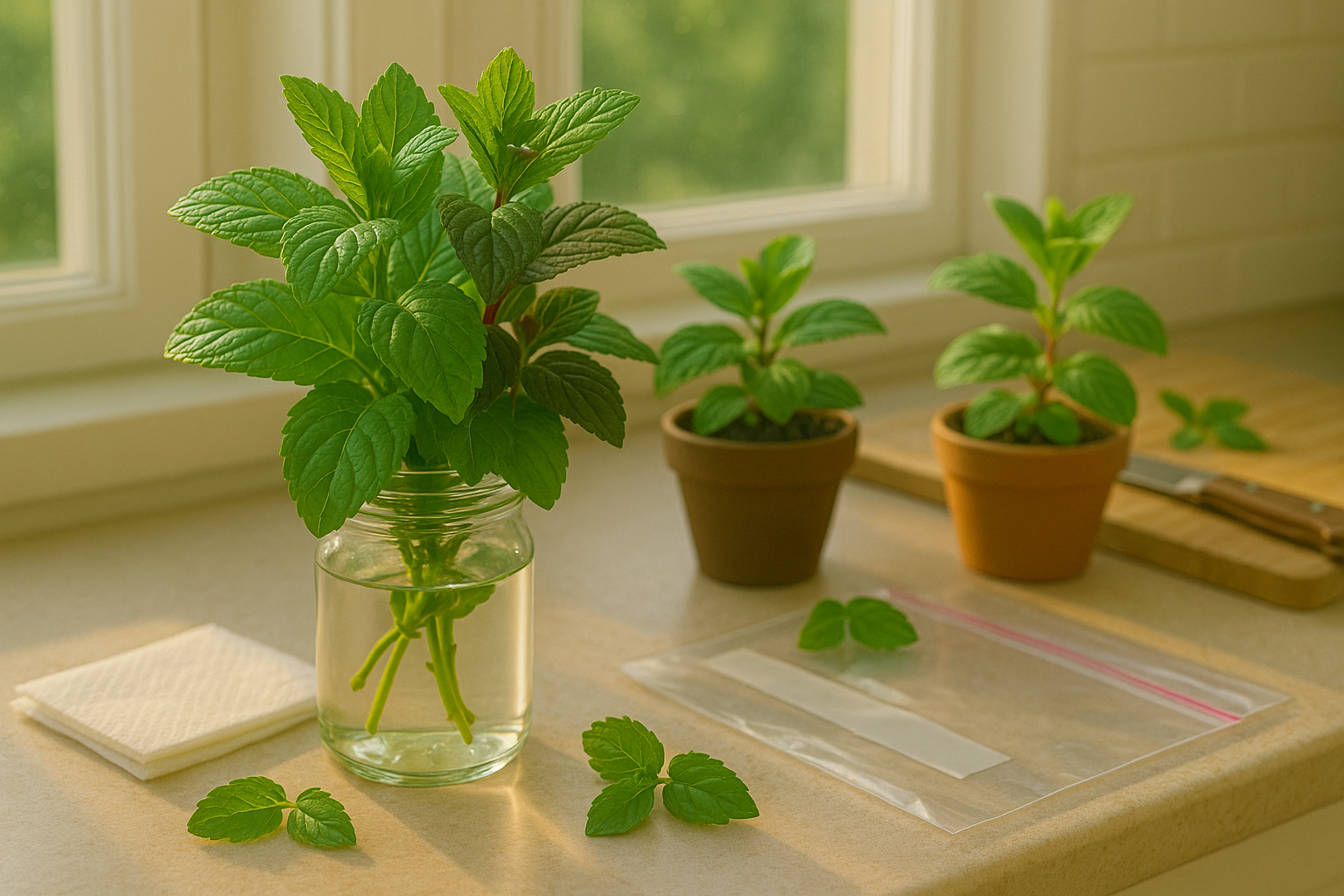Introduction
If you’ve ever wondered how to store mint, you’re not alone—this fragrant herb is a staple in many kitchens, perfect for everything from garnishing drinks to elevating salads and desserts. Despite its popularity and versatility, keeping mint leaves fresh and full of flavor can be surprisingly tricky. Mint wilts quickly, loses its vibrant color, and can even turn slimy if not handled properly.
Thankfully, you don’t have to settle for dull, lifeless mint leaves! In this post, we’ll guide you through three easy and effective ways to store mint: keeping it fresh in the fridge, freezing it for long-term use, and drying it for a handy, shelf-stable supply. With simple tips and real-world examples, you’ll always have aromatic, bright-tasting mint ready whenever your recipes call for it—no wilted leaves or wasted bunches in sight.
Choosing and Preparing Mint Leaves for Storage
When storing mint leaves, start by selecting the freshest sprigs you can find—look for vibrant green leaves with no brown spots, wilted edges, or signs of bruising. Wilted or discolored mint leaves affect the flavor and can encourage faster spoilage.
Once you’ve chosen your mint, gently rinse the sprigs under cold water to remove any dirt or residue. Avoid harsh handling, as mint bruises easily, and damaged leaves will spoil quickly. Lay the clean mint on a paper towel or clean kitchen cloth, then pat gently to soak up excess moisture.
For best results, let the mint air dry for an extra 10–15 minutes to ensure it’s completely dry—any lingering moisture encourages mold and rot during storage. Take a moment to remove any tough stems or wilted leaves while prepping, as these won’t store well and can shorten the lifespan of the rest.
Proper cleaning and preparation are key to preserving your mint’s brightness and flavor, helping it stay fresh for several days in the fridge or even longer if frozen. Spending an extra few minutes on preparation means you’ll have fresher mint for drinks, garnishes, and cooking all week long.
How to Store Fresh Mint in the Refrigerator
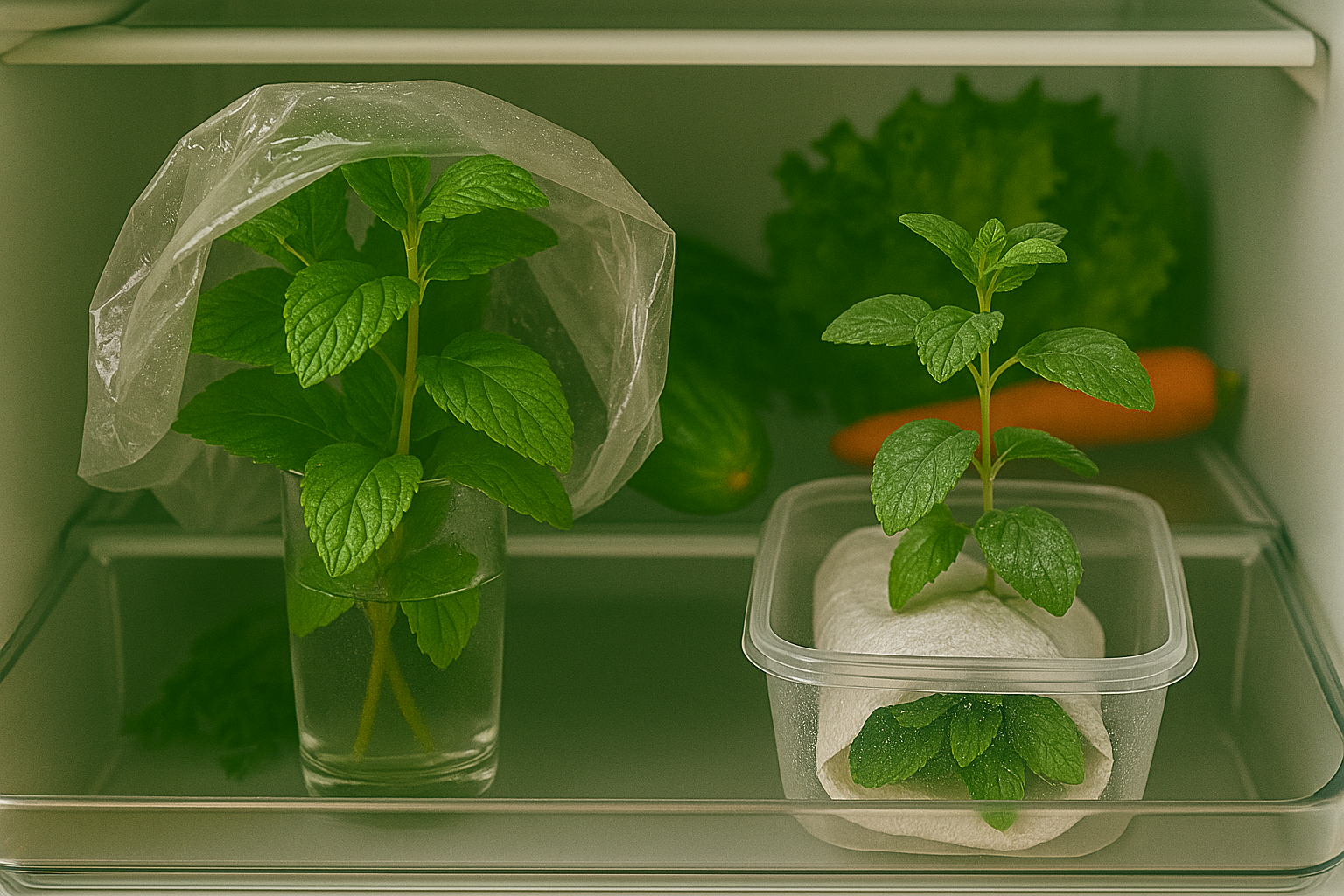
Storing fresh mint in the refrigerator is easy with the right approach. One popular method is to treat your mint like a bouquet of flowers: trim the ends of the stems, place the bunch upright in a glass of water (about an inch or two deep), and loosely cover the top with a clean plastic bag. Store the glass in your fridge door to avoid tipping, and swap the water every few days to keep things fresh. This technique keeps mint perky for up to two weeks.
Another effective option is to gently wrap the leaves and stems in a slightly damp (not wet) paper towel, then slide the bundle into an airtight container or resealable plastic bag. This method minimizes wilting and works well, especially if you don’t have space for a glass of water; expect your mint to last about one week this way.
Whichever method you choose, keep mint away from strong-smelling foods like onions and garlic, as its tender leaves can easily absorb odors—using a tightly sealed container helps here. To maximize shelf life, avoid crushing the leaves, as bruising encourages faster spoilage.
Check your mint regularly: healthy leaves should be firm, bright green, and fragrant. Discard any sprigs that show signs of yellowing, dark spots, sliminess, or a musty smell. With a little care, you’ll always have fresh mint on hand for cooking, cocktails, or garnishing your favorite dishes.
Freezing Mint for Long-Term Storage
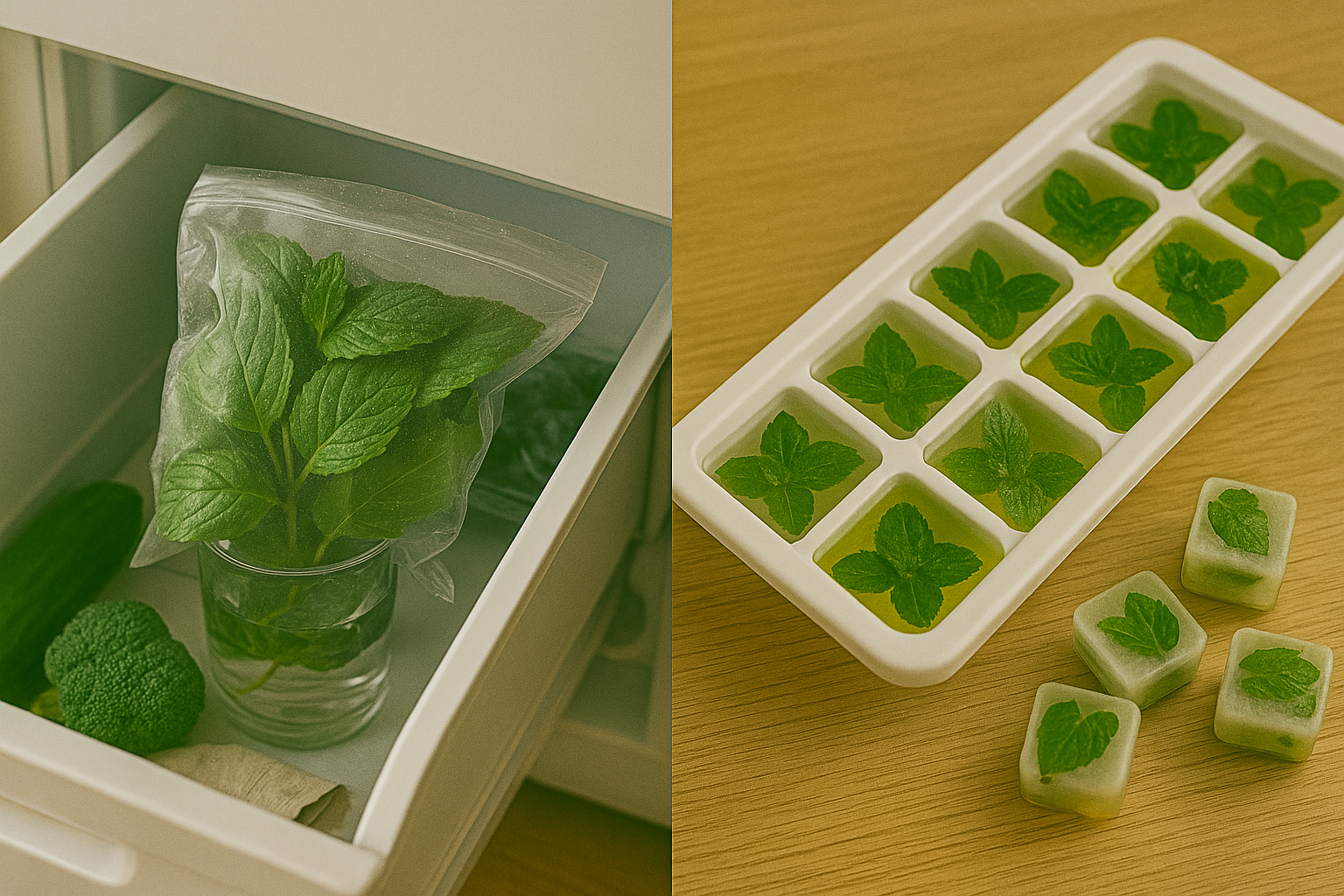
Freezing mint is a fantastic way to preserve its flavor and vibrant color long after the growing season ends. When you freeze mint, you lock in its essential oils, capturing that fresh, herbal aroma for months with minimal effort.
There are two easy methods to choose from, depending on how you like to use mint in your recipes.
- Whole Leaves: The simplest way is to freeze whole, washed, and thoroughly dried mint leaves in airtight freezer bags. Squeeze out as much air as possible to prevent freezer burn, and label the bags with the date for easy tracking. This method keeps the leaves intact, perfect for infusing drinks or garnishing desserts straight from the freezer.
- Mint Cubes: For more versatility, chop the mint leaves and pack them into ice cube trays, then cover them with either water or a neutral oil like olive oil, and freeze. These mint cubes are handy for tossing into soups, stews, smoothies, or cocktails without the need to measure or chop fresh herbs. If using water cubes, add them directly to hot or cold drinks; if using oil cubes, melt them into a pan to start a flavorful sauté.
Either way, frozen mint cubes are a time-saving addition to any busy kitchen, ensuring fresh flavor at your fingertips all year long.
Drying Mint—Methods and Uses
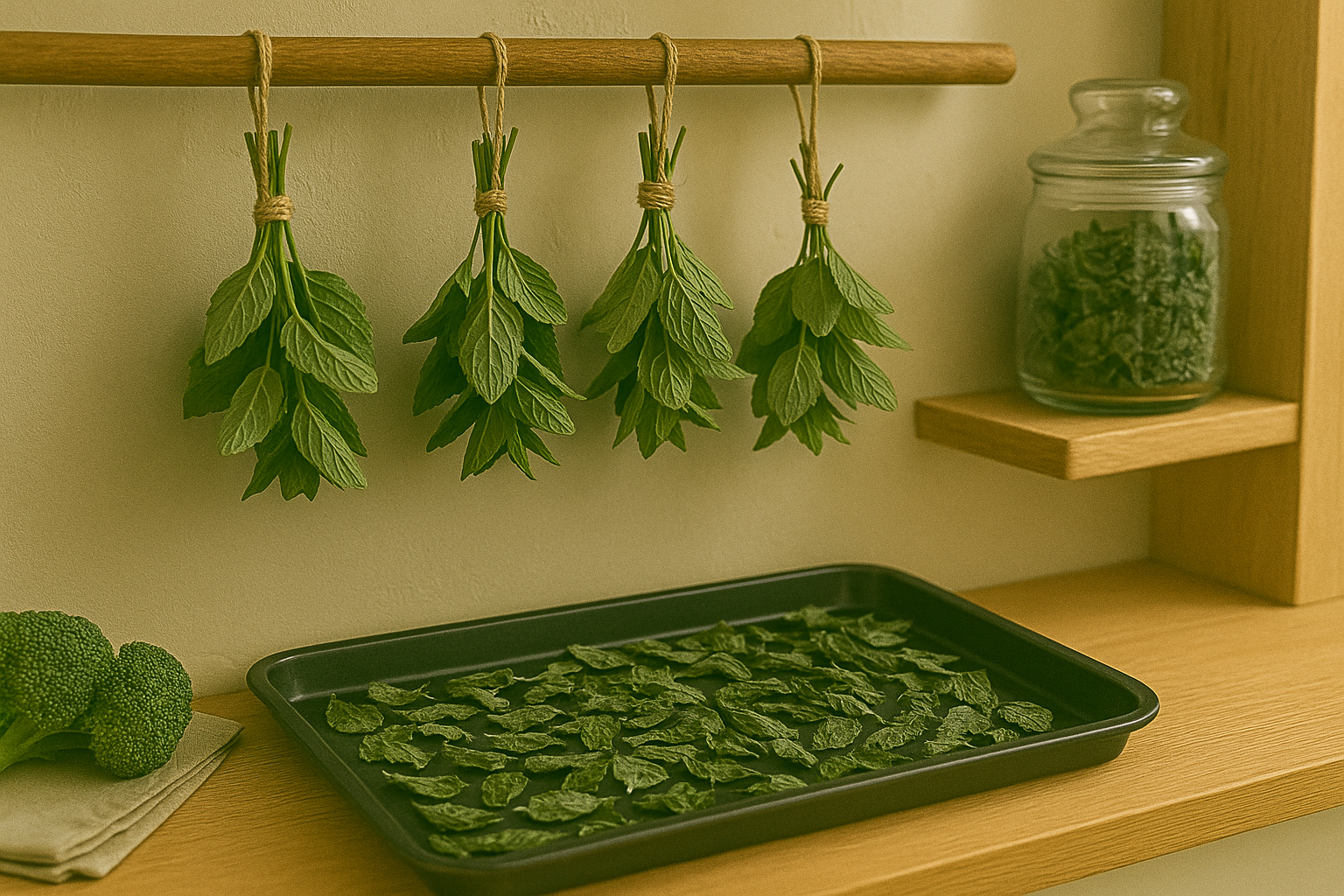
Drying mint at home is simple and unlocks a world of flavor for your kitchen. For air-drying, gather small bunches of fresh mint, tie the stems together, and hang them upside down in a warm, dry place away from direct sunlight—a pantry or unused closet works well. This method takes about 1-2 weeks, with the mint ready when the leaves crumble easily between your fingers.
For a quicker option, you can oven-dry mint: spread clean leaves in a single layer on a baking sheet, then heat at the lowest temperature (usually around 170°F or 75°C) for 2-3 hours, checking regularly to prevent burning. You’ll know they’re ready when the leaves are dry, brittle, and aromatic.
Store your dried mint in an airtight glass jar, ideally in a cool, dark cupboard to preserve its color and flavor—avoid plastic, which can trap moisture.
Dried mint is incredibly versatile:
- Steep it in hot water for soothing herbal tea.
- Add crushed leaves to sauces, soups, or marinades for a fresh burst of flavor.
- Mix it into homemade potpourri for a calming scent around your home.
With these easy methods, you’ll have aromatic mint ready whenever you need it.
Quick Tips & Creative Uses for Stored Mint
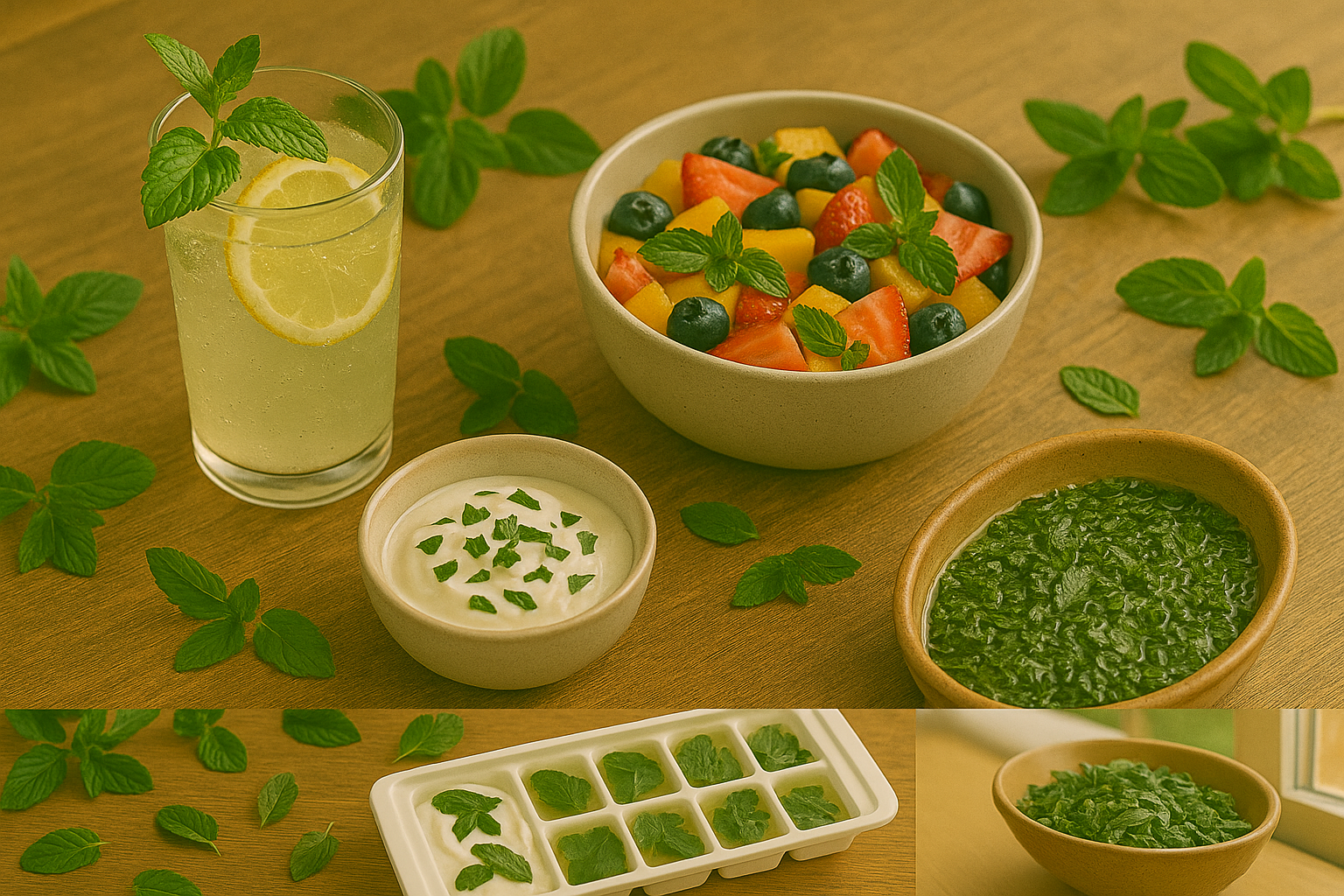
If your stored mint starts looking tired and wilted, don’t toss it—revitalize those leaves with a quick ice water bath for a few minutes. This simple trick perks up limp stems, making them look and taste fresher.
Once revived, get creative with your mint supply!
- Toss a handful into homemade lemonade, sparkling water, or iced tea for a cooling lift.
- Blend mint into yogurt or ice cream for an herbaceous twist.
- Add chopped leaves to fruit salads and chocolate desserts for a burst of fresh flavor.
Mint also shines in savory dishes: try stirring it into chimichurri, tzatziki, or a simple pesto as a surprise ingredient.
Storing Mint for Longer Freshness
For longer storage, trim the stems and set the bunch in a glass of water (like a bouquet), change the water every couple of days, and cover loosely with a plastic bag in the fridge.
Alternatively, finely chop and freeze mint in ice cube trays with a little water or olive oil—perfect for tossing into sauces or drinks at any time.
Remember, keeping mint dry and using paper towels to absorb moisture in storage bags also extends freshness, helping you reduce food waste while always having vibrant herbs at your fingertips.
Conclusion
Choosing the right way to store mint—whether in the fridge, freezer, or dried—helps keep your herbs fresh and flavorful for longer. Each method has its perks: the refrigerator is great for short-term use, freezing is perfect for long-lasting freshness, and drying is ideal for easy storage.
Don’t be afraid to experiment and find what works best for your kitchen routine. Have you found a storage trick that keeps your mint lasting even longer? Share your tips in the comments below, and why not try out a new mint recipe this week to put your fresh herbs to good use?
